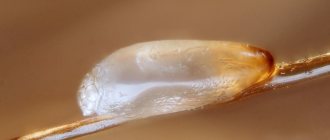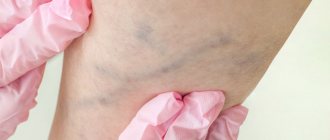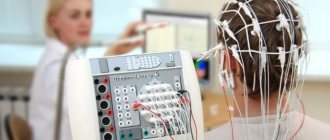An ingrown nail (onychocryptosis) is the ingrowth of the nail plate into the lateral edge of the nail fold.
Ingrown toenails occur in patients of all ages. It is most often observed on the inside of the big toe, but can also occur on the nail plates of the hands. The largest number of requests for help from patients occurs in the spring-summer period, when there is a seasonal change from closed shoes to open, often narrow, dress shoes.
The nail plates on the hands and feet originate in the matrix area located at the base of the nail. The white, crescent-shaped area of the nail root (the socket) is the visible part of the nail matrix. Nail growth occurs due to the division of germ cells, which gradually “push” the old nail plate forward.
On average, a nail grows 0.1 mm per day (or 3 mm per month) and completely changes in 105 days. In women, the nail plate grows a little slower than in men, and in children it grows twice as fast as in adults. The convex shape of the nail plate provides a protective function: it partially dampens the mechanical impact and partially transfers it to the soft tissues of the side fold.
The side bolsters act as so-called shock-absorbing cushions, so damage to them leads to disruption of the protective structures and can contribute to the occurrence of various nail diseases.
Causes of ingrown toenails
- Improper
nail care is the main cause of ingrown nails, when the corners of the nail are cut too deep, which leads to improper growth of the nail plate and ingrowth into the soft tissue of the periungual fold. Also, the corner of the nail may not be trimmed enough and the free edge will dig into the side ridge; in the presence of hyperhidrosis, this can provoke an ingrowth. - One of the factors contributing to the development of an ingrown nail into the lateral edge of the nail fold is the congenital or acquired expansion of the strip of the growth layer of the nail plate. A wide growth zone leads to the formation of a wide nail plate, as a result, part of the growing edge puts pressure on the nail fold, injuring it. Inflammation develops and, as a result, excessive growth of soft tissue occurs in the area of the nail fold.
- Wearing uncomfortable tight shoes with a narrow toe provokes excessive pressure from the growing edge into the side bolster. Shoes of the wrong size can also be considered a risk factor: the choice of shoe size is the size of the foot plus 0.5-1 cm.
- Bacterial and fungal infections can cause changes in the structure of the nail plate, making it thicker and causing unnecessary pressure on the nail bed and lateral folds.
- Congenital bone deformities of the feet, including Rubinstein-Taybi syndrome (wide first toe syndrome) and Ostler syndrome.
- Prolonged compression of the toes with a plaster cast or wearing compression garments can also cause the formation of an ingrown edge of the nail plate.
- Acquired bone deformities - flat feet, wide feet, sharp deviation of the big toe inward or outward.
- Anatomical features of the structure of the foot and toes (physiologically large, fleshy periungual ridges).
- Foot injuries.
- Excess body weight.
- Diseases - diabetes, gout, psoriasis, rheumatoid arthritis, collagenosis, etc.
Symptoms of the disease
People usually don’t pay too much attention to the first manifestations of the disease, although it is quite easy to prevent complications at an early stage. Signs of an ingrown toenail are as follows:
- first, the skin surrounding the nail turns red, then swelling forms in this area, and pain appears when you touch it;
- pus and blood begin to ooze from the damaged area, as the nail digs deeper into the skin, causing infection;
- if nothing is done, the ingrown part of the nail becomes denser, its deformation is almost irreversible; bone tissue is affected. At this stage, the disease becomes chronic. It is no longer possible to permanently correct the nail, but there is a chance to avoid relapse with proper care.
Are you experiencing symptoms of an ingrown toenail?
Only a doctor can accurately diagnose the disease. Don't delay your consultation - call
Classification of onychocryptosis
Onychocryptosis can go through three stages of development:
- mild, when changes in the plate are not yet visible, but there is pain, discomfort, swelling and inflammation of the periungual ridges;
- moderate, when the tissues of the terminal phalanx are hyperemic, edematous, and infiltrated. The nail plate becomes dull and thickened;
- heavy when the plate becomes thin and brittle. The periungual ridges are swollen and covered with hypergranulations. When the nail folds are affected on both sides, the volume of the phalanx increases.
Onychocryptosis can occur both without inflammation and with the addition of infection.
Ointments and gels
Ointments and gels are the best way to soften an ingrown nail, kill infections and correct the correct growth of the plate.
- Dr.Scholl's is an excellent gel for softening and relieving inflammation. Suitable for children over 12 years old.
- “Nogtinorm” is an ointment with petroleum jelly, propylparaben, palm oil SK-CO2, licorice extract and beneficial herbs. Softens the nail plate, fights inflammation and normalizes growth.
- Ichthyol ointment – fights infections and pain. Used for night dressings.
- "Levomekol" gel - kills bacteria and stimulates regeneration.
- Vishnevsky ointment - helps eliminate pus and destroy pathogens, accelerates regeneration, and is used as dressings.
- Gel "Dimexide" for ingrown nails - relieves inflammation, but has a large list of contraindications (pregnancy, disorders of the liver and kidneys, stroke, cataracts, pregnancy).
Treatment of ingrown toenails
Conservative methods of treating ingrown toenails can eliminate the problem only in the initial stages of the disease. It is recommended to reduce the load on the finger, limit walking, wear loose shoes and hosiery, foot hygiene, compresses with antiseptic solutions.
In order to ensure free growth of the nail, the overhanging nail fold is pushed back using gauze strips (tamponing) soaked in wound-healing preparations (special plastic splints can be used instead of gauze).
A podiatrist's office may perform a procedure to remove the ingrown part of the nail.
Patients with mild to moderate stages of onychocryptosis are shown orthopedic treatment of an ingrown toenail using orthonyxia methods, including installation of staples, half-staples or plates on the nail plate - these methods allow you to gradually bring the edges of the nail out and level the nail plate.
If conservative treatment of an ingrown nail is ineffective, surgical intervention may be required: surgery to remove an ingrown nail - marginal resection of the nail plate without resection of the periungual fold, or marginal resection of the nail plate with resection of the periungual fold, or complete removal of the nail plate (taking into account the growth rate nails, after complete removal of the nail plate, relapse may occur after about three months).
The operation to remove an ingrown toenail is performed on an outpatient basis under local anesthesia. After the operation, an aseptic bandage with an antiseptic is applied to the wound surface. Dressings in the postoperative period are carried out under the supervision of a doctor. The sutures are removed within 7-14 days, depending on the extent of the operation and the body’s ability to recover.
Diagnosis of the disease
Having discovered symptoms of an ingrown toenail, you need to go for examination to a specialist surgeon as soon as possible in order to prevent the possible development of the disease.
In an advanced stage, when there is a clear infection (indicated by severe redness and swelling), laboratory tests may be prescribed:
- general blood analysis;
- checking your blood sugar level (carried out to rule out diabetes).
In rare, especially advanced cases, an x-ray of the hand or foot is performed to exclude the fact of bone tissue damage.
Complications
Complications of onychocryptosis occur with prolonged course and further development of the inflammatory process. Such complications include:
- abscess of the toe - swelling, redness of the entire nail phalanx and the formation of a cavity with purulent contents;
- gangrene of the toe - irreversible necrosis of the soft tissues of the foot, accompanied by blackening of the skin;
- osteomyelitis of the nail phalanx of the finger - an infectious inflammatory process that affects the entire bone of the phalanx;
- lymphangitis and/or lymphadenitis is inflammation of the lymphatic vessels and lymph nodes, developing as a result of the spread of the inflammatory process from the source of infection.
Reviews
Some user reviews:
- Nadezhda Egorova. I don’t advise anyone to start such a situation. A year ago, my toe on my left foot began to ache. At first I didn’t pay attention, but after about a week it started to hurt so much that I even had difficulty moving. I tried cutting it in different ways, but it didn't do any good. I used all sorts of folk remedies to steam and numb the nail, but the effect was almost zero. I had to go to the hospital. There they removed the part of my nail that had stuck, and from which my finger began to rot, then they treated the wound and now everything is fine.
- Olga Melnikova. I can give you this advice. First, you need to understand at what stage the disease is. If the nail has grown slightly into the side of the finger and does not fester, then this is only the beginning of development. And you can cure your nails by taking salt or soda baths with the addition of potassium permanganate for 15-20 minutes. After steaming your feet, carefully trim the ingrown part. And if the nail begins to fester, then do not waste time, but go to the pharmacy for Vishnevsky ointment. It draws out pus well and prevents the spread of infection. To cure the disease, apply the drug to a small piece of bandage and wrap it around the damaged areas of the skin (fix the bandage, try to change it every three hours). If you cannot treat the disease at home, then a visit to the surgeon is inevitable.
Prevention of ingrown toenails
In the absence of pathological processes that can lead to ingrown nails, to prevent ingrown nails, you should follow the rule of nail trimming: The nail should be cut in a straight line, passing no lower than the top of the finger, with sharp straight nail scissors. The corners of the nail should be filed with a file so that they are smooth and do not injure the skin.
The next step is to select comfortable shoes that do not interfere with the free growth of the nail. For flat feet, it is important to wear orthopedic shoes or special insoles, and for hallux valgus (when the first toe deviates inward relative to the others) - silicone inserts.
Fraser bracket
A wire loop that is custom made and applied to the nail without requiring cutting. It acts on the principle of a screed, lifting the corners and preventing them from growing in. Over time, the plate straightens.
Before use you need:
- thoroughly clean the nail and the skin around it;
- correctly cut the corners of the plate;
- remove loose and rough skin on the rollers, as well as from under the nail;
- treat with a disinfectant solution.
A rigid wire is placed across the nail, and the ends are bent over the edges (in the middle). After 3-4 days you can feel the elimination of pain and some relief.
General information
Onychocryptosis is a condition also called “ingrown toenail.”
It is diagnosed if the nail plate grows into the edge of the nail fold. Most often, such a pathology occurs on the big toe, and the plate grows into the outer edge of the nail fold. This condition occurs quite often in people (about 1.8%) and significantly spoils overall well-being. After all, if the nail has grown into the toe, it causes redness, swelling and severe pain. And if onychocryptosis is not treated, then over time the inflammatory process becomes chronic. In addition, if timely and correct treatment is not provided, the disease will become recurrent. Therefore, in this case, surgical correction of the problem is often required. Onychocryptosis is diagnosed in both children and adults. But, as a rule, this problem manifests itself in people of working age. An ingrown toenail, whose ICD-10 code is L60.0, is diagnosed more often in women than in men. How to promptly recognize the problem and cure the disease will be discussed in this article.
Diet
Diet 15 table
- Efficacy: therapeutic effect after 2 weeks
- Timing: constantly
- Cost of food: 1600-1800 rubles per week
It is very important to eat well and create a varied and balanced diet. After all, a lack of certain minerals and vitamins can lead to impaired growth of the nail plate. The menu should contain a lot of vegetables, fruits, and high-quality dairy products.
Literature
1. Savelyeva E. M. Pain in the foot, flat feet, spurs, arthritis, bone deformation and other problems. best treatment methods /[Savelyeva E. M.]. - St. Petersburg: Vector, 2011. - 128 p.
2. Korobkov V.N. Ingrown toenail of the first toe. training manual / V.N. Korobkov, I.S. Malkov; Ministry of Education and Science of Russia. Federations, State education institution of higher education prof. education "Kazan. state tech. University", State University education establishment of additional prof. education "Kazan. state honey. acad. Roszdrav". - Kazan: Publishing house of Kazan State Technical University, 2010. - 40, [1] p.
Ingrowth stages
1. No inflammation. It is characterized by pressure, pain, and the appearance of calluses (core calluses along the nail groove).
2. With inflammation. It is characterized by all 5 signs of inflammation: redness (=hyperemia), local increase in temperature (=hyperthermia), pain, swelling, suppuration.
3. With functional limitation. Characterized by excessive size of nail folds and weeping hypergranulations. Pain not only when walking, but also at rest.
Course for pedicurists “Correction of nail shape using 3TO staples” – Practitioner course 2 days
Read more >>>










